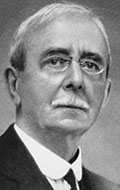Your shopping cart is empty!
MENU
-
Contact Us+
Contact Us
Please contact us at:
Sequitur Books
6033 Clevelandtown Rd.
Boonsboro, MD 21713
tel: 2407510320
em: crs@sequiturbooks.com
- Blog +
 In 1904 Dr. Charles Sherrington gave a series of ten lectures at Yale on the nervous system. These lectures were compiled in 1906 in his book, The Integrative Action of the Nervous System. "This work stands as the true foundation of modern neurophysiology; it is considered by Fulton to rank in importance with Harvey's De Motu Cordis, while Walshe asserts that it holds a position in physiology similar to Newton's Principia in physics." (Garrison-McHenry, History of Neurology, p. 229)
In 1904 Dr. Charles Sherrington gave a series of ten lectures at Yale on the nervous system. These lectures were compiled in 1906 in his book, The Integrative Action of the Nervous System. "This work stands as the true foundation of modern neurophysiology; it is considered by Fulton to rank in importance with Harvey's De Motu Cordis, while Walshe asserts that it holds a position in physiology similar to Newton's Principia in physics." (Garrison-McHenry, History of Neurology, p. 229)
Before publishing The Integrative Action of the Nervous System, Sherrington had spent 20 years engaged in clinical research on mammals, primarily rhesus monkeys. In part, Sherrington's discoveries were the culmination of years of arduous and systemic research, a triumph of the scientific method. However, Sherrington's success resulted from pursuing a line of study, reflexology, that other researchers hadn't fully considered in regards to brain function. "Sherrington postulated that the reflex is the simplest unit of nervous integration." (Levine) His work focused on isolating involuntary reflexes and the grey matter of the spinal cord by systematically mapped sensory dermatomes. Previously, anatomical texts had presumed nerves going to muscles were motor nerves.




Sherrington's discovery that a large number of these nerves were sensory upended the contemporary view. Building on Ramon y Cajal's neuron theory, Sherrington concluded that reflexes were integrated activities of an organism and not simply isolated reflex arcs. To better describe his system, Sherrington introduced the terms, "synapse" and "proprioceptive." He proposed that the synapse was the site where reflexes interact. The Integrative Action of the Nervous System "provided a framework for subsequent research that led to an understanding of the mechanisms of synaptic transmission." (Levine, 3 p.)

He shared the Nobel Prize for Physiology or Medicine in 1932 'for their discoveries regarding the functions of neurons.'
Sherrington's work remains important today as the basis to our understanding of neural function, neural surgery, and the treatment of nervous disorders such as paralysis and atrophy.
Sequitur Press recently reprinted a leatherbound facsimile of The Integrative Action of the Nervous System by Charles Sherrington. Our printing was faithfully reproduced from our 1st edition. Should you wish to buy a copy of this seminal work, please contact us.
Refs:
Garrison-Morton 1432; Printing in the Mind of Man 397; Norman 1939; Heirs of Hippocrates 2198.
Garrison-McHenry, History of Neurology, p. 229.
Burke, Robert. "Charles Scott Sherrington's Integrative action: a centenary notice." Brain: A Journal of Neurology. Vol. 130, no. 4, p. 887-894. doi:10.1093/brain/awm022
Levine, David. "Sherrington's "The Integrative action of the nervous system": A centennial appraisal." Journal of the Neurological Sciences 253 (2007) 1–6. DOI:10.1016/j.jns.2006.12.002
Eccles, J. C. (1957). "Some Aspects of Sherrington's Contribution to Neurophysiology". Notes and Records of the Royal Society. 12 (2): 216–225. doi:10.1098/rsnr.1957.0012
M.R. Bennett, P.M.S. Hacker / Progress in Neurobiology 67 (2002) 1–52